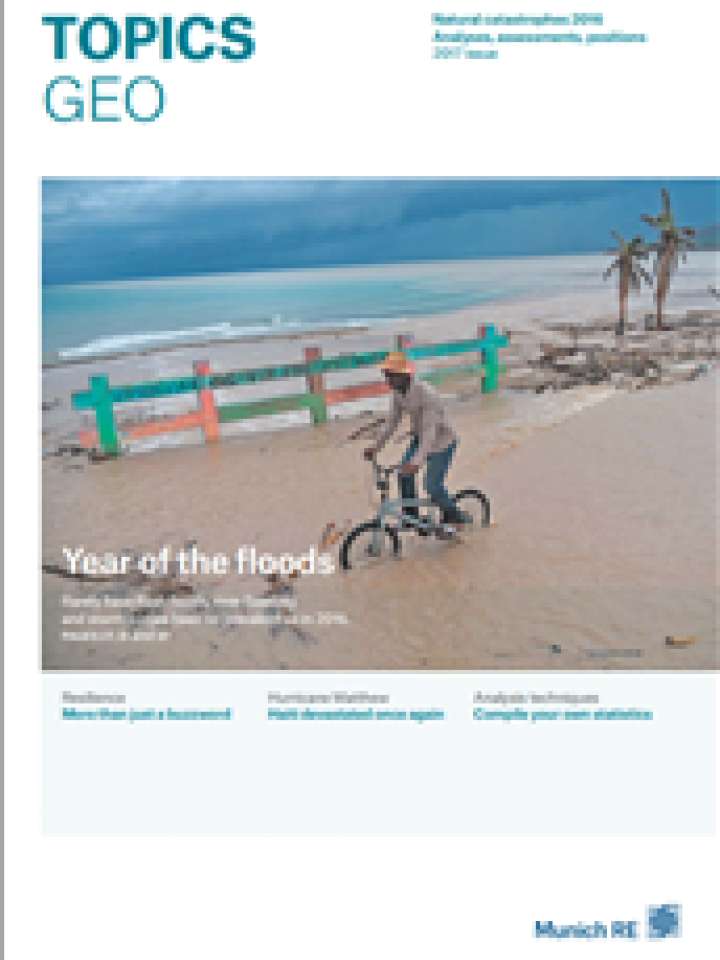Topics geo natural catastrophes 2016: analyses, assessments, positions
The latest issue of Topics Geo focuses on resilience: how losses can be reduced or prevented and how to overcome a disaster as quickly as possible if one does strike.
2016 saw the highest natural disaster losses of the past four years. At US$ 175bn, they were back up in the mid-range, where they are expected to be. The share of uninsured losses – the gap in cover – remained high, with around 70% of losses not covered by insurance. By taking on some of the financial burden, insurance can do much to help people and countries get back on their feet quickly following a natural disaster.
Two events stood out in 2016. The year’s costliest disaster was a double earthquake that rocked the Japanese island of Kyushu. In the autumn, Hurricane Matthew devastated entire stretches of land in Haiti before striking the Bahamas and brushing the east coast of the USA. Matthew was the most powerful hurricane to hit the North Atlantic for almost ten years.
Another noteworthy feature was the large number of floods that accounted for almost a third of the year’s overall losses. Intensive research is being carried out to determine the extent to which climate change has influenced individual events. Research enabling us to deduce that specific events will be more likely in future as a result of climate change will provide clear incentives to improve disaster prevention.
Explore further
